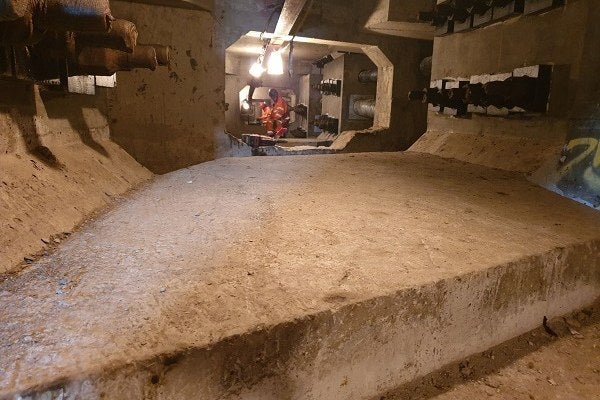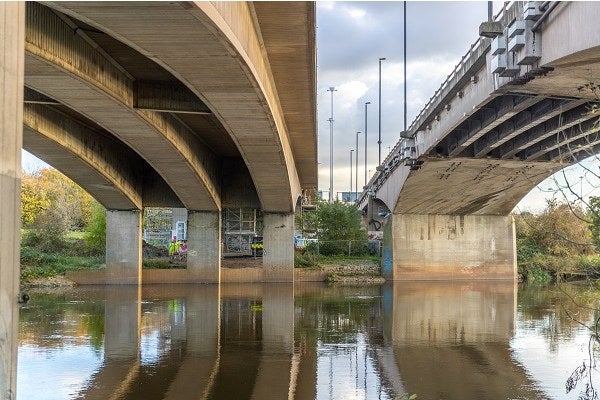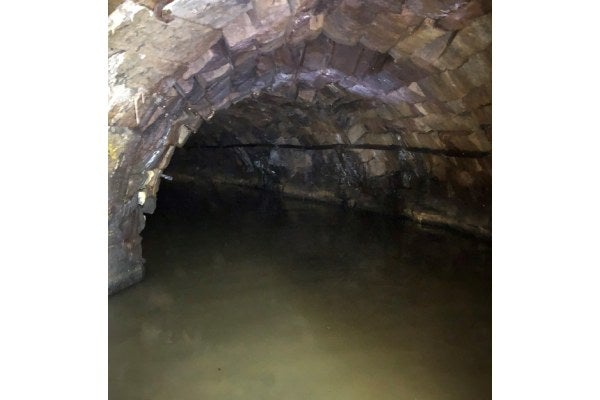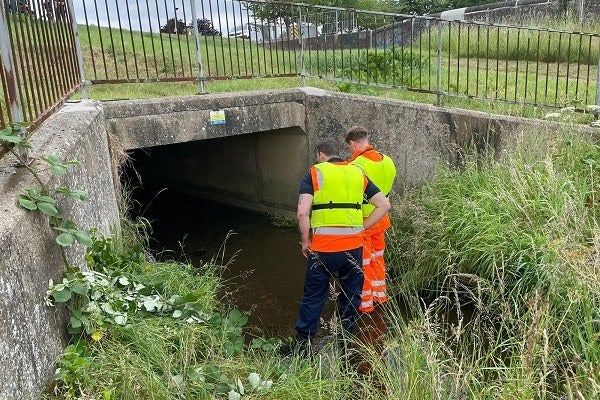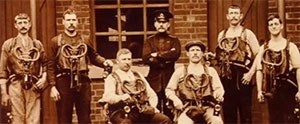Drones can be used to inspect internal components of roads, railways, bridges, wind turbines and tunnels. Allowing data to be collected, detailed photographs and video taken – all without the needs for inspectors to be present.
1. Internal bridge inspections
Around 10,000 bridge inspections are conducted each year, addressing issues such as the condition of the paint, through to the integrity of the structure itself. These routine inspections can involve persons having to enter and work inside the bridge structure to carry out the inspections. Many bridges have large voids within them, and workers enter these spaces to conduct internal inspections.
There are also voids in the bridge support columns and sometimes the underneath support of the bridge itself is hollow. Many such spaces encountered during bridge inspection work are classified as confined spaces and present safety hazards that require mitigating to keep workers safe.
Drones can be used to inspect the condition of the metalwork, to see if there is any rust and to check the integrity of the concrete and overall structure. Following this initial inspection, workers can then enter to carry out repairs and we can provide industrial rescue teams if required, as we did for the Clifton Bridge repairs recently.
2. Road and rail tunnels
As well as networks of tunnels in use today across the UK for both road and rail transport, many new tunnels continue to be built – including new tunnels under rivers to ease traffic congestion such as the new Lower Thames Crossing tunnels.
For both existing and new tunnels, the use of drones can significantly help with reducing cost, time and risk. Drones were used in the construction of the new Elizabeth Line Crossrail tunnel to inspect otherwise inaccessible areas and get a closer look at the pipes and services – improving efficiency and safety.
Drones can also be used to inspect existing tunnels – both the integrity of the brick, metal or concrete of the tunnel structure itself, to check for cracks and fractures and any anomalies in the ceiling or walls of the tunnel. Many tunnels in the UK were built in Victorian times and inspections can often present risks as the spaces may be classified as confined spaces and risk assessments need conducting to identify any specific risks present such as harmful gases.
Drone inspections remove such risks as they avoid the need for people to enter the space.
3. Ventilation shafts
Very long road and rail tunnels need to facilitate ventilation, so ventilation shafts are built into the fabric of the tunnel that run from the surface to the top of the tunnel wall itself. These shafts remove pollutants from the tunnel – such as smoke or diesel.
They require regular inspection to check their condition and as an internal structure, can be inspected by a drone to identify any issues before maintenance works need to enter to conduct repairs.
4. Pipes / Services
The installation or refurbishment of services such as water, electric or gas, usually requires trenches to be dug in roads. The pipes used to house these utility services can be made of a variety of materials including glass reinforced plastic (GRP), metal or concrete.
Before the trenches are filled in it is important the pipework is inspected, and an internal inspection drone is an ideal solution.
At only 40cm in diameter, it can travel through the pipes to complete an inspection, it can check the integrity of the pipework, the physical joints and ensure no debris has been left inside the pipes.
5. Enclosed culverts
Culverts divert water from land above them and often run under highways. Blocked culverts can cause the water to back up and prevent it from draining the ground above and may also collapse. They may also contain toxic gases and are dangerous to go into.
Regular inspection is essential and drones have proven an excellent way to conduct an initial assessment of the condition of a culvert as explained in the Environmental Agency case study.
Reducing risk, cost and time.
